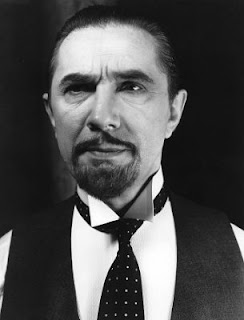Starring: Pola Negri, Harry Leidtke, Emil Jannings and Max Laurence
Director: Ernst Lubitsch
Rating: Five of Ten Stars
Albert Wendland (Leidtke) rescues Ma (Negri) from Radu (Jannings), a maniac who kidnapped her and who has been passing her off as a living mummy in an Egyptian tomb. The girl finds fame and fortune as the artist's model and a cabaret dancer in a major European city. However, Radu pursues them, intent on claiming what is his through any means necessary.

"The Eyes of the Mummy" has been touted by some as the first mummy movie. I can't help but wonder if those commentators actually bothered watching it, because there is even less mummy action here than there is in Universal's 1932 "The Mummy" and no supernatural element at all.
Or is there?
There are hints in the film that Radu is more than just a scammer, kidnapper and rapist. In one scene, he seems to appear in spirit-form in Ma's bedroom, and he later commands her through nothing more than the power of his mind. What might these scenes mean?
A generous and imaginative viewer could take these elements and combine them with the story Ma tells for having been dragged from the riverbank by Radu and waking up in the tomb as proof that the spirit of an ancient Egyptian queen dwells within the girl, brought back to life by Radu through magic--her being dragged away from the river was her being brought back from the spirit world to this one.
A less-generous viewer might say that the movie is the cinematic equvilent of an inkblot and little more than a poorly defined melodrama that features a loosely stitched-together selection of gothic fiction elements tossed in with no more thought beyond "well, this'll creep 'em out!"
Whatever the case, "The Eyes of the Mummy" is an unevenly paced movie that never quite manages to invoke enough horror or suspense to make it truly entertaining; some scenes become better when you run the DVD at 2x speed, a hidden advantage to silent movies. The acting is decent (even if you're one of the people who can't stand the acting styles of early cinema) and stars Emil Jannings and Pola Negri are especially fun to watch. Negri's exotic dances are more snicker-inducing to modern viewers than they are sexy, but she shows herself to be both a good actress, dancer and stunt woman--watch for that fall down the stairs near the end of the movie!



















.jpg)






.jpg)
